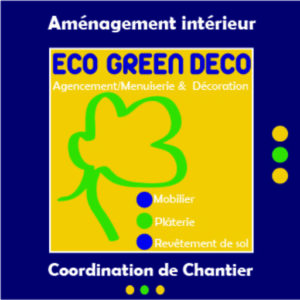Wehrli thought that the dimensions differences represents an intimate dimorphism
This new odd shape of the latest p4, instead of mesolingual conid, is feature of your Tragulidae and Bachitheriidae , , . The combination out-of a great tusk instance p1, a very elongated diastema ranging from p1 and you can p2 and that build of one’s p4 is exclusive certainly ruminants and you will indicate the newest Bachitheriidae , . The latest differentiation between Bachitherium types is usually considering dimensions distinctions , . Nevertheless diastema duration , brand new dimensions of brand new postcranial stays , , and you can variations in the overall form of this new mandible , , , correspond to a kinds-specific ecomorphology. The fresh new p3 and you will p4 away from Bachitherium specimens away from Gaimersheim1 is features neocrista in the straight back valley. Blondel argues that the ability is different among Bachitheriidae and you may are an enthusiastic autapomorphy of one’s kinds B. lavocati. Although not, similar has happen seen on the B. curtum and B. insigne, in the event it stays rare . Aiglstorfer ainsi que al. have revealed the large variability in the shape of the brand new traguline p4 in one variety. The fresh p4 of your Tragulidae Dorcatherium naui can do not have the cristid developing the lingual edge of the new tooth on the whole mediator possible . The size of one’s teeth examined let me reveal much like that from Bachitherium curtum and B. lavocati , , , (discover S1 Annex). Although not, the latest diastema amount of brand new specimens regarding Gaimersheim is actually longer than those of the tiny B. curtum, just what clearly corresponds to the latest diagnosis off B. lavocati advised of the Sudre . So far, Bachitherium lavocati was just known in the Pech Desse locality , .
Dysfunction discussion
New specimen MNHN LIM157 merchandise an equivalent morphology to the people of Bachitherium during the which have trochleas perhaps not in-line. The new edges is somewhat more in proportions and you can highest, new outside that being bigger. The newest plantar crest was absent. There clearly was a huge plantar projection of your inner lib out of the new proximal trochlea. Because of the size available with Martinez Sudre , so it traditional try large (dorso-plantar height: 12.4 mm and you can size: 13.3) than just specimens away from B. viretti and you can B. curtum, and might correspond to very large B. lavocati or even the imply size of B. guiroutensis (B. insigne becoming perhaps not demonstrated). Taking a look at the exemplory instance of Martinez Sudre and Sudre , B. curtum, B. viretti, and you may B. guiroutensis have trochleas smaller lined up than towards the B. lavocati. Also, the lips of one’s proximal trochlea, from inside the B. guiroutensis commonly symmetric, as opposed to B. lavocati. Considering a few of these has, all of our specimen are extremely exactly like Bachitherium lavocati.
Holotype known specimens pointers
Holotype. Bouvrain mais aussi al. (, Fig. 1) has generated specimen MNHN Qu4771, the right mandible towards the enamel line p2-m3 and you can ramus partially managed, given that holotype to the kinds “Amphitragulus” quercyi (that it works, Fig. 5.1), on the Old range regarding Quercy (Tertiary, France).
Referred specimens. Dated collection out-of Quercy MNHN Qu4771 right mandible into the tooth line p2-m3 and you will ramus partially maintained (Holotype; , Fig. 1; it really works, Fig. 5.1). Balsthal Bannli NMS 7685 best mandible which have p4-m3 (it really works, Fig. 5.2). Pech Desse USTL PDS1312 proper mandible with p2-m3 (, Fig. 2.4c; this really works, Fig. 5.3); USTL PDS1342 remaining mandible which have p4-m1; USTL PDS1421 best maxillary with D2-D4 (, Fig. 2.4b; it really works, Fig. 5.5); USTL PDS1441 remaining mandible that have p2-m3; USTL PDS1803 best mandible that have p2-m3 (, Fig. 14); USTL PDS2134 best mandible which have enamel outlet regarding p1 and you can tooth line p2-m1 (that it works, Fig. 5.4); USTL PDS2137 left mandible that have m1-m3; USTL PDS2138 right mandible having p3-m1; USTL PDS2139 left maxillary which have P3-M3 (, Fig. 2.4a; that it work, Fig. 5.6). Gaimersheim1 SNSB-BSPG 1952II304 right m2; SNSB-BSPG 1952II4803 remaining maxillary that have P3-M1; SNSB-BSPG 1952II4804 correct maxillary with D3-M1; SNSB-BSPG 1952II4811 left mandible having m2-m3; SNSB-BSPG 1952II4820 leftover mandible with p4-m1; SNSB-BSPG 1952II4821 right mandible with m1-m3; SNSB-BSPG 1952II4844 best mandible that have m3; SNSB-BSPG 1952II4845 correct maxillary that have M1 M3; SNSB-BSPG 1952II4847 kept maxillary with D3-M1; SNSB-BSPG 1952II4851 proper mandible that have m1-m3; SNSB-BSPG 1952II4854 left mandible with m1; SNSB-BSPG 1952II4858 correct mandible which have m1; SNSB-BSPG 1952II4865 kept mandible with m1-m3; SNSB-BSPG 1952II4867 proper mandible that have d4; SNSB-BSPG 1952II4872 best mandible having m2-m3; SNSB-BSPG 1952II4873 remaining m3; SNSB-BSPG 1952II4878 left mandible that have m3; SNSB-BSPG 1952II4884 correct mandible having p3-m2; SNSB-BSPG 1952II4885 proper mandible which have p4-m2; SNSB-BSPG 1952II4891 best M3; SNSB-BSPG 1952II4892 left M2; SNSB-BSPG 1952II4894 left mandible that have p2-m3; SNSB-BSPG 1952II4896 best m1-m2; SNSB-BSPG 1952II4909 proper mandible with m2-m3; SNSB-BSPG 1952II4911 fragmented skull; SNSB-BSPG 1952II4912 correct maxillary having P2-M1 (this really works Polyamorous dating review, Fig. 5.7); SNSB-BSPG 1952II4914 kept mandible which have p2-m3; SNSB-BSPG 1952II4917 remaining p4; SNSB-BSPG 1952II4920 remaining maxillary having M1-M3; SNSB-BSPG 1952II4921 best maxillary having M1-M3; SNSB-BSPG 1952II4924 left M2; SNSB-BSPG 1952II4927 correct mandible with m1-m3; SNSB-BSPG 1952II4932 kept M3; SNSB-BSPG 1952II4933 left M3; SNSB-BSPG 1952II4941 right p4; SNSB-BSPG 1952II4942 remaining d3; SNSB-BSPG 1952II4943 kept mandible having d3-m1; SNSB-BSPG 1952II4944 correct maxillary which have M2-M3; SNSB-BSPG 1952II4945 left maxillary with D4-M2; SNSB-BSPG 1952II4946 kept mandible that have m1-m3; SNSB-BSPG 1952II4947 proper maxillary with D4-M2; SNSB-BSPG 1952II4948 best maxillary which have P3-M1; SNSB-BSPG 1952II4949 best maxillary with M1-M3; SNSB-BSPG 1952II4950 kept mandible which have p4-m1; SNSB-BSPG 1952II4951 M2 leftover; SNSB-BSPG 1952II4952 proper mandible that have p3, m2-m3.

